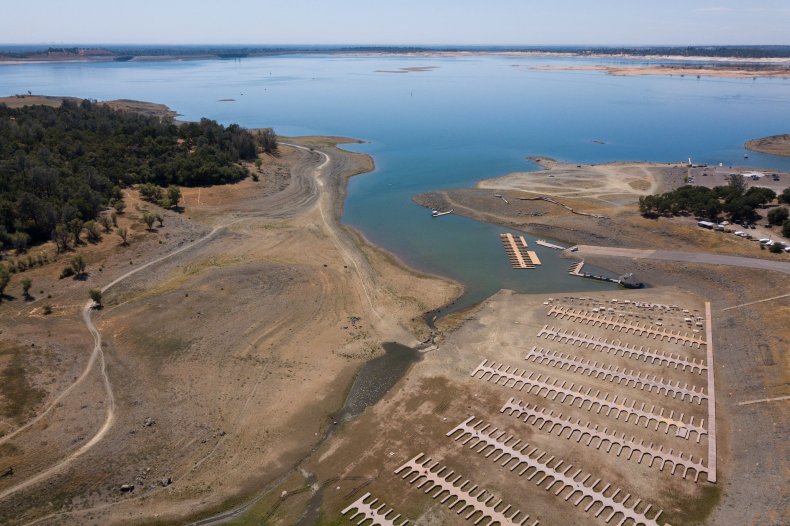Drought Map Shows Status of California Water Crisis as Newsom Adjusts Rules
- California recently saw a wet winter, and the U.S. Drought Monitor Map shows that nearly half of the state is free from any drought classification.
- Governor Gavin Newsom rolled back some drought restrictions but warned residents to remain vigilant.
- The drought situation on the Colorado River remains dire and other states relying on the river for water supply were required to reduce their annual allocation.
- As the wet season ends, there is limited time for storms to generate enough rainfall to replenish the state’s groundwater reserves.
California Governor Gavin Newsom rolled back some drought restrictions in the wake of the state receiving a deluge of precipitation that has remedied much of the drought.
However, he stopped short of admitting the drought was over for the state and urged residents to remain vigilant.
California recently emerged from three dry years that took a toll on its drought status. This winter has been a particularly wet one for California, which experienced at least a dozen atmospheric rivers that have unleashed excessive precipitation, prompting floods, landslides and erasing much of the state’s drought.
For the first time in years, the state is completely free of extreme and exceptional drought, according to the U.S. Drought Monitor Map. As of the most recent map, nearly half of the state is free from any drought classification.

Getty
Newsom didn’t revoke the entire drought emergency proclamation, which would allow the state to continue fast-tracking groundwater replenishment projects and other efforts to combat drought.
AccuWeather meteorologist Scott Homan told Newsweek that in some areas of California, such as around the valleys, groundwater could take much longer to replenish.
When heavy rain falls quickly, there is more runoff, and less water has a chance to be absorbed. A few inches might seep into the ground, Homan said, but that water will quickly be absorbed by plants. Groundwater is used to replenish reservoirs when drought plagues an area.
Homan said that groundwater in some portions of the state is at normal levels but others are still below average. Cities in California’s central valley, northern valley and portions of the southern valley are “below normal to much below normal stages,” according to Homan.
As the wet season ends, there’s limited time for storms to generate enough rainfall to replenish the groundwater reserves.
“I don’t see it reaching above normal in many locations, especially in the valleys where it’s much below where it needs to be,” Homan said. “I don’t think we will see enough storms to make that happen, but any little bit helps.”
Despite the improvements, Newsom was hesitant to declare California free from drought. On Friday, he rolled back some drought restrictions such as asking residents to voluntarily reduce their water use by 15 percent. Newsom also eliminated an order passed in early 2022 that required the state’s water suppliers to implement Level 2 of their water contingency plans.
However, Newsom refused to admit the state was free from drought.
“It should be and feels like it is, but it continues to be complicated,” he said during a press conference.
Although many of California’s reservoirs have filled to the point of overflow and snowpack melt is expected to increase water availability throughout the spring and summer, Newsom said that California should recognize the drought north and south of the Colorado River. Despite the excessive rain in the region, important reservoirs such as Lake Mead remain at historic lows.
The drought situation on the Colorado River remains dire, and some states relying on the river for water supply have been required by the U.S. Bureau of Reclamation to reduce their annual allocation. Arizona was hit with the steepest cuts, losing roughly 20 percent of its annual allocation.
Newsom said he hoped that the drought improvement would eliminate stress and anxiety around voluntary water-use reduction, but he urged people to remain vigilant. He encouraged residents to continue to preserve water by not contributing to wasteful practices such as irrigating ornamental plants or washing driveways.

Comments are closed.